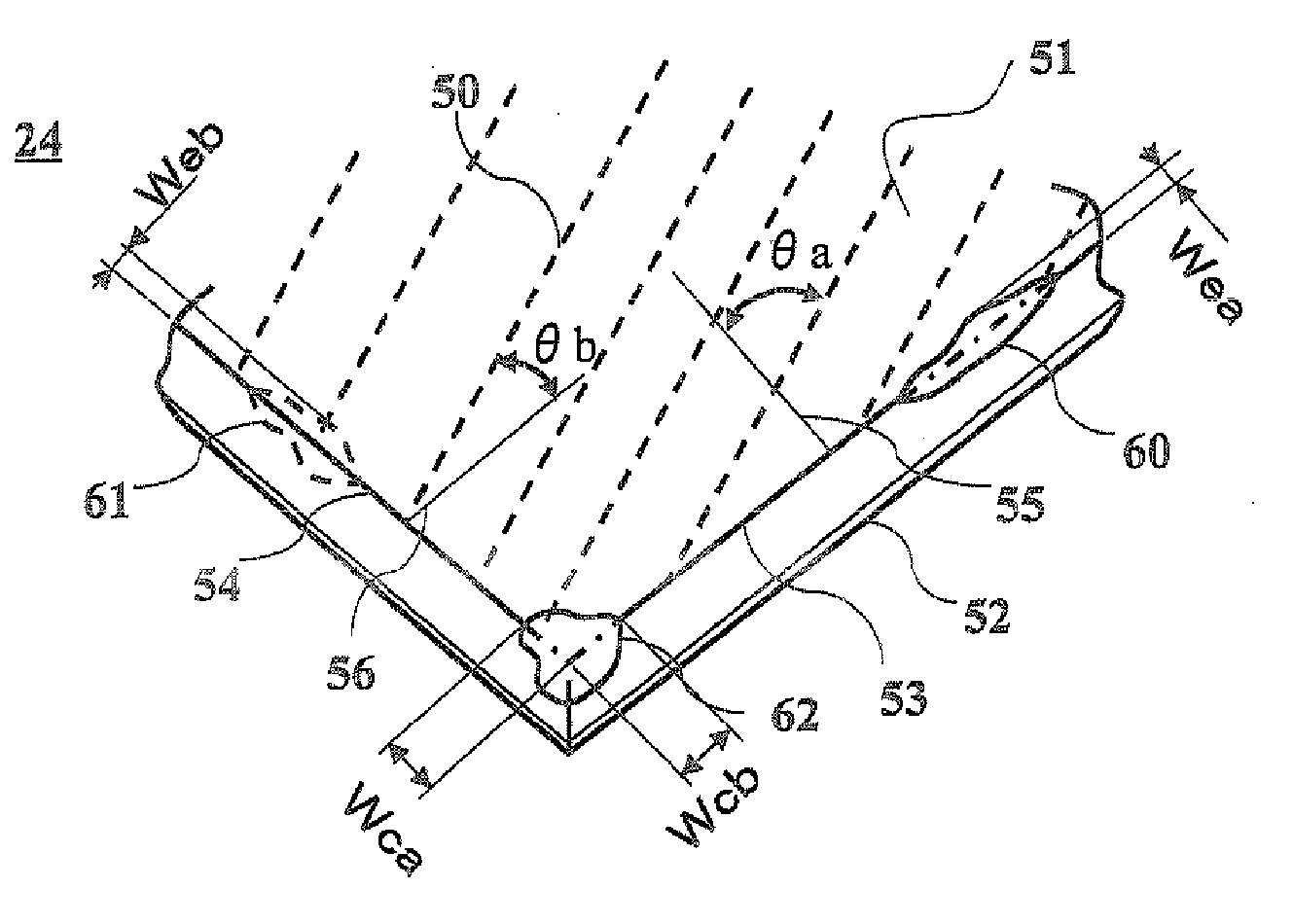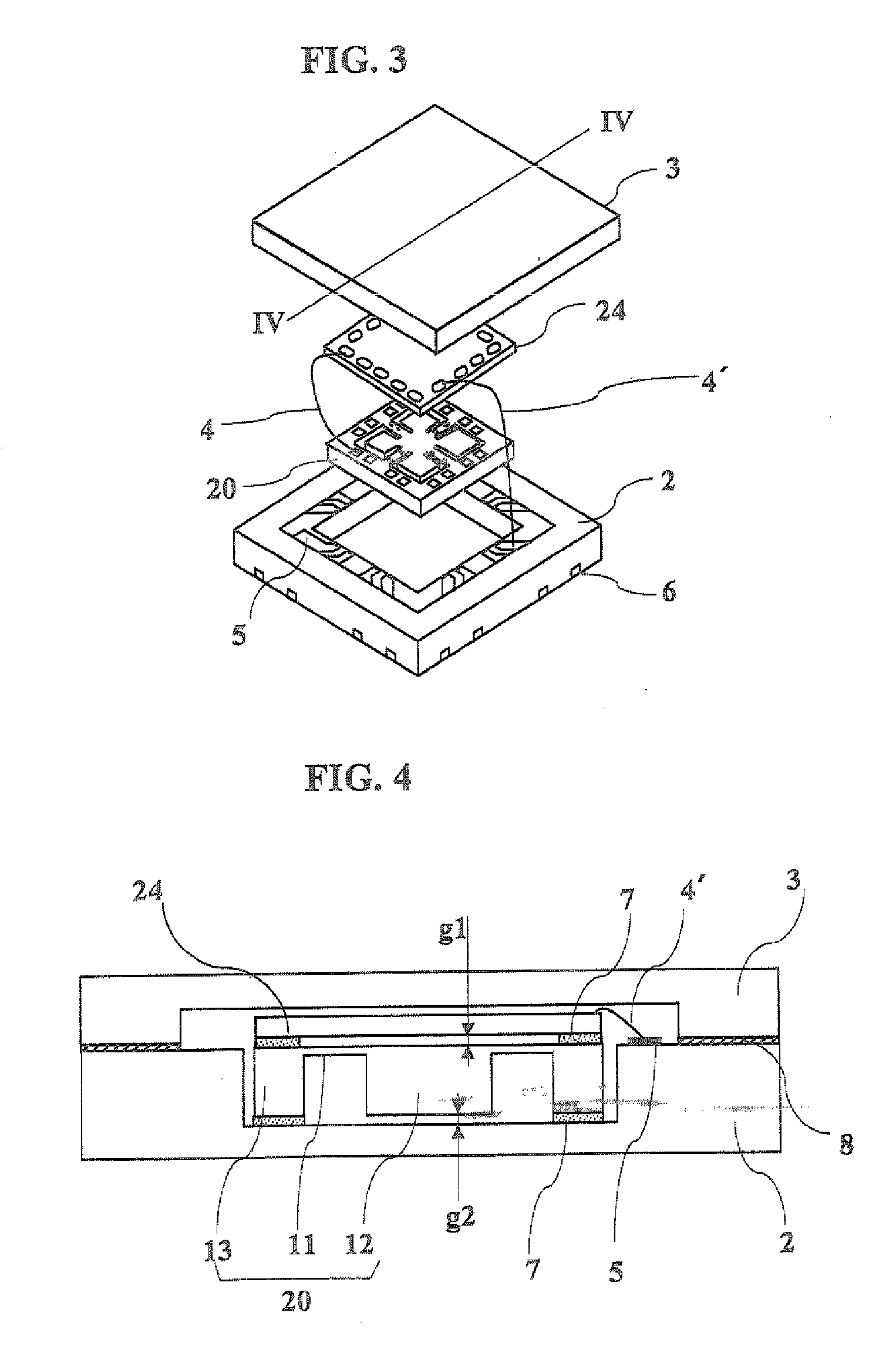Displacement detection device
a displacement detection and detection device technology, applied in microstructural devices, microstructures, instruments, etc., can solve the problems of displacement detection devices that have an operation problem, difficult to miniaturize an acceleration sensor apparatus in such a structure, and difficult to satisfy both good sensitivity and good impact resistance, so as to achieve high reliability and reduce the loss of chipping on the side ridge of ic chips.
- Summary
- Abstract
- Description
- Claims
- Application Information
AI Technical Summary
Benefits of technology
Problems solved by technology
Method used
Image
Examples
example 1
[0037] A relationship between an angle of grinding traces with a dicing direction of IC wafers and chipping appearance frequency will be explained below. First of all, methods of grinding and dicing and conditions for taking data are described. After reducing thickness of IC wafers from 625 μm to 250 μm in silicon thickness by grinding, the wafers were cut into IC chips of 2.6 mm×2.2 mm by a diamond dicing wheel. A waterproof sheet was bonded onto an IC circuit surface to protect the IC circuit from a grinding coolant for grinding. The grinding was done by a rotary grinding machine with a diamond grinding wheel of #2000 at a revolution speed of about 600 rpm. The surface roughness of the ground surface was 0.13 μm in Rmax and 0.014 μm in Ra. Rmax and Ra were measured according to JIS B 0601. Since a thickness of the IC circuit was about 5 μm, the thickness to cut was about 255 μm. The IC wafer was bonded to an adhesive sheet, and the IC wafer was diced until a half of the adhesive s...
example 2
[0044] Using IC chips having loose chippings, acceleration sensors that are a kind of displacement detection devices were assembled. An exploded perspective view of the assembled acceleration sensor is shown in FIG. 3. In FIG. 3, an acceleration sensor element 20 is electrically connected to an IC chip 24 by lead wires 4, and the IC chip 24 is connected by wires 4′ to terminals 5 of a protection case 2 and to external terminals 6. An acceleration sensor 10 is assembled with a protection case lid 3 fixed on and sealed with the protection case 2. Piezo resistors of the acceleration sensor element 20 are omitted from the drawing, FIG. 4 shows a cross-sectional view taken along the line IV-IV of FIG. 3. The acceleration sensor element 20 is composed of a weight 12, a support frame 13 and flexibly deformable portions 11. Piezo resistors (not shown) connected with the lead wires 4 are formed on surfaces of the flexibly deformable portions 11. The IC chip 24 is disposed for a rear surface ...
example 3
[0050]FIG. 5A and FIG. 5B show acceleration sensor elements for acceleration sensors of EXAMPLE 3 by perspective views. An IC chip 24′ is fixed on an acceleration sensor element 20 in FIG. 5A with three side ridges of the rectangular IC chip 24′ bonded to a support frame by adhesive 7′. On the top surface of the IC chip 24′, an IC circuit is formed, and a rear surface (a surface facing the acceleration sensor element 20) of the IC chip 24′ is ground to have a predetermined thickness in the same manner as shown in FIG. 1 and grinding traces at an angle of 15 degrees to 30 degrees with a vertical line on the side ridge 53. The side ridge 53 having the grinding traces at the angle of 15 degrees to 30 degrees with the vertical line does not have chippings on it, as explained in EXAMPLE 1. Since side ridges 54 perpendicular to the side ridge 53 have grinding traces at an angle of 75 degrees to 60 degrees with a vertical line, the side ridges 54 show loose chipping appearance ratio of 5 t...
PUM
 Login to View More
Login to View More Abstract
Description
Claims
Application Information
 Login to View More
Login to View More - R&D
- Intellectual Property
- Life Sciences
- Materials
- Tech Scout
- Unparalleled Data Quality
- Higher Quality Content
- 60% Fewer Hallucinations
Browse by: Latest US Patents, China's latest patents, Technical Efficacy Thesaurus, Application Domain, Technology Topic, Popular Technical Reports.
© 2025 PatSnap. All rights reserved.Legal|Privacy policy|Modern Slavery Act Transparency Statement|Sitemap|About US| Contact US: help@patsnap.com



